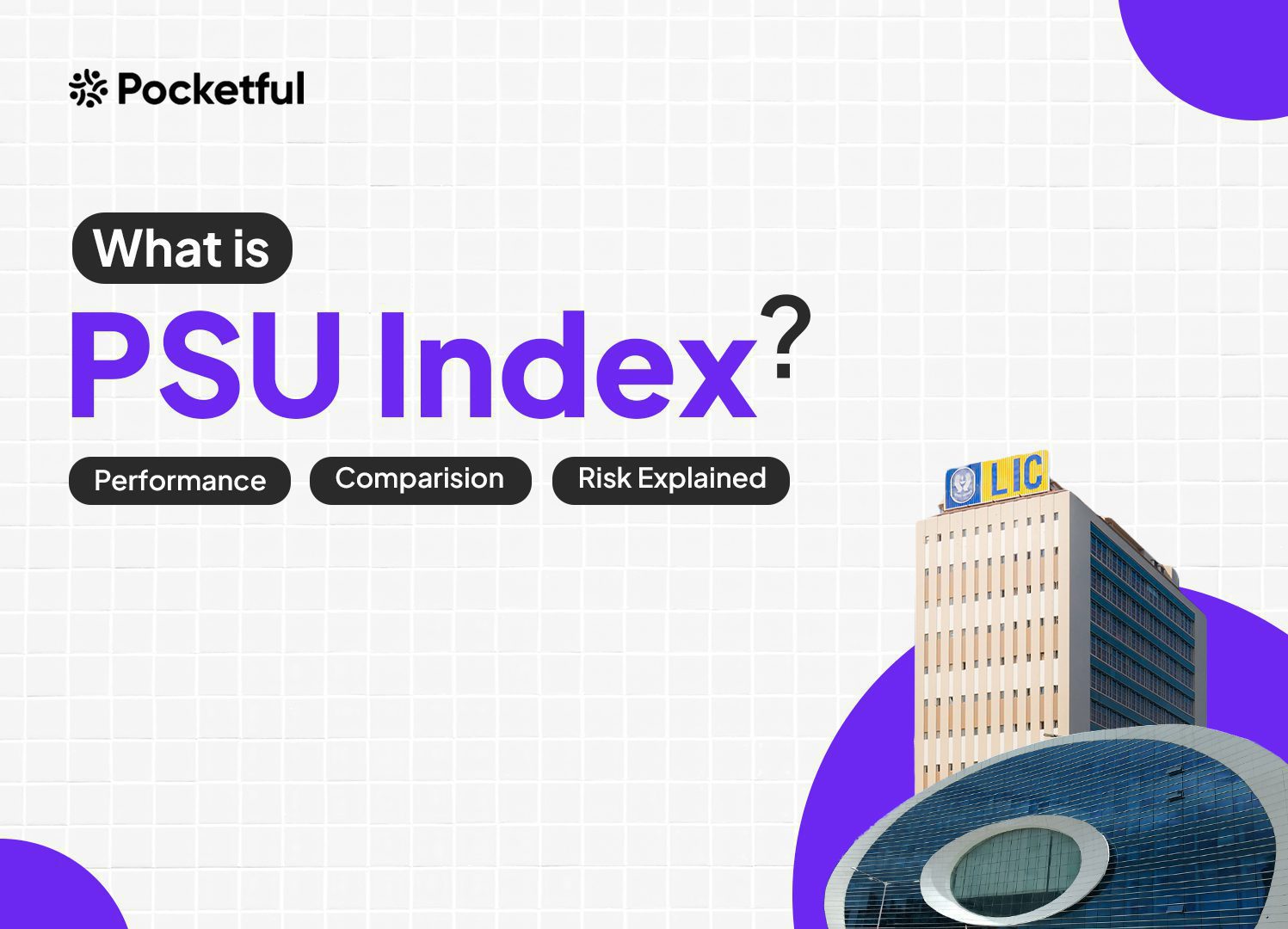| Type | Description | Contributor | Date |
|---|---|---|---|
| Post created | Pocketful Team | Apr-17-24 | |
| internal linking | Nisha | Feb-15-25 |
Read Next
- Rakesh Jhunjhunwala Portfolio 2025: Top Holdings & Strategy
- BankBeES vs Bank Nifty – Key Differences
- Current Ratio vs Quick Ratio Key Differences
- Best REIT Stocks in India 2025
- Best Data Center Stocks in India 2025
- Best Rare Earth Stocks in India
- Top 10 investment banks in India
- What Is iNAV in ETFs?
- Best Investment Options in India 2025
- Best Energy ETFs in India 2025
- Radhakishan Damani Portfolio 2025: Stocks & Strategy Insights
- Best SEBI Registered Brokers in India
- Best Air Purifier Stocks in India
- Best Space Sector Stocks in India
- Gold Rate Prediction for Next 5 Years in India (2026–2030)
- Difference Between Equity Share and Preference Share
- Vijay Kedia Portfolio 2025: Latest Holdings, Strategy & Analysis
- Raj Kumar Lohia Portfolio 2025: Holdings, Strategy & Analysis
- How to Earn Passive Income Through Dividend-Paying Stocks in India
- Top 10 Richest Investors in the World 2025 – Net Worth, Key Investments & Strategies
- Blog
- what is psu index performance comparison benefits and risks
What is PSU Index? Performance, Comparison, Benefits, and Risks Explained

The Indian stock market boasts a diverse range of indices, each catering to specific investor preferences. PSU index is one such index.
This index tracks the performance of some of India’s most reliable and established PSU companies. The index consists of giants like Coal India, NTPC, and SBI.
The PSU index is known to hold the capability to generate decent returns as PSU firms come with a sense of security because of government backing.
In today’s blog, we will be exploring the benefits, risks and performance of the PSU funds.
PSU Index Background
Before we dig deeper into the PSU Index, let us have a quick overview of what PSUs are.
PSUs stand for Public Sector Undertakings that are owned and operated by the government of India, either at the central or state level. PSUs play a major role in the Indian economy, contributing to multiple sectors and can be established through various means such as nationalisation, special enactments, mergers, and acquisitions.
Types of PSUs
- CPSEs (Central Public Sector Enterprises) – Companies where the direct holding of the Central Government or other CPSEs is 51% or more
- PSBs (Public Sector Banks) – Banks where the direct holding of the Central/State Government or other PSBs is 51% or more
- SLPEs (State Level Public Enterprises) – Companies where the direct holding of the State Government or other SLPEs is 51% or more
Public sector enterprise offers a wide range of products which include steel, heavy machinery, fertilisers, drugs and pharmaceuticals, petrochemicals, textiles, cement etc.

Overview
The PSU Index was launched on February 1, 1999, and tracks the performance of the Public Sector Undertakings (PSUs) listed on the Bombay Stock Exchange (BSE) in India. It measures the combined performance of some of the companies classified as PSUs by the BSE and serves as a benchmark for funds and portfolios focusing on PSUs.
The S&P BSE PSU is calculated using the float-adjusted, market-cap-weighted methodology. PSUs are recognised for their dividend payouts and offer a source of regular income for investors. Additionally, the PSU Index can be a relevant investment option for investors seeking exposure to the Indian public sector.
Did You Know?
The first disinvestment by way of public offer took place in 1995-96. Since then, Rs. 2,90,489.62 crore has been raised through PSU disinvestments from capital markets.
Top 10 Constituents
State Bank of India, NTPC, Power Grid Corp, Coal India, Bharat Electronics, Indian Oil Corp, Power Finance Corp, Bharat Petroleum Corp, and Hindustan Aeronautics Ltd.
S&P BSE PSU vs. S&P BSE 500
The table below shows a comparison between the annualised returns of S&P BSE PSU and S&P BSE 500.
| 2023 | 2022 | 2021 | |
|---|---|---|---|
| S&P BSE PSU | 61.48% | 28.3% | 47.95% |
| S&P BSE 500 | 26.55% | 4.77% | 31.63% |
While S&P BSE PSU has demonstrated an unexpected return of 61% and 47% during the shorter periods of one year and three years, respectively, S&P BSE 500 has stayed somewhat consistent over the longer term. This indicates that thematic investing brings a lot of risk due to lack of diversification.
Read Also: List Of Best PSU Stocks in India
Categories
PSU Funds can be categorized into two main types, Equity PSU Funds and Debt PSU Funds,
Equity PSU Funds primarily invest in the equity shares of PSUs and debt PSU Funds invest in the bonds issued by the PSU.
Equity PSU Funds
| Fund Name | 2023 | 2022 | 2021 | 2020 |
|---|---|---|---|---|
| SBI PSU Fund Reg Gr | 54.03 | 29.01 | 32.41 | -9.98 |
| Invesco India PSU Equity Gr | 54.48 | 20.54 | 31.05 | 6.07 |
| ABSL PSU Equity Reg Gr | 59.28 | 28.55 | 37.1 | – |
| NIFTY 100 TRI | 21.24 | 4.94 | 26.45 | 16.08 |
The table above showcases some of the top-performing Equity PSU Funds and their returns relative to the benchmark, Nifty 100.
Inferences that can be drawn from the above data are as follows,
PSU funds have been on a roll for a past few years due to several factors and PSU stocks witnessed a significant surge in the year 2023 which lead to exceptional returns for these funds. Funds like Aditya Birla Sunlife PSU and SBI PSU Equity funds delivered blockbuster returns of more than 50%
While 2023 stands out, PSU funds have not offered consistently higher returns every year. The performance of these funds can vary depending on the market conditions and the specific PSU stocks they hold.
Debt PSU Funds
| Fund Name | 2023 | 2022 | 2021 | 2020 |
|---|---|---|---|---|
| Axis Banking & PSU Debt Reg Gr | 6.53 | 3.75 | 3.39 | 9.59 |
| Tata Banking & PSU Debt Reg Gr | 6.6 | 2.9 | 3.42 | 10.75 |
| ABSL Banking & PSU Debt Reg Gr | 6.86 | 3.65 | 3.59 | 10.91 |
| Franklin India Banking & PSU Debt Gr | 6.84 | 3.27 | 3.69 | 9.13 |
| SBI Banking & PSU Fund Reg Gr | 6.56 | 2.87 | 2.58 | 10.47 |
| Kotak Banking and PSU Debt Gr | 6.77 | 3.6 | 3.91 | 10.51 |
| Nippon India Banking & PSU Debt Gr | 6.8 | 3.17 | 3.86 | 10.93 |
The table above shows the returns of multiple debt PSU Funds over the past few years.
Year-wise returns of debt PSU funds are likely to be less volatile when compared to equity PSU funds. They show a gradual increase over time, with some fluctuations.
Over the past three years, the average return for the Banking and PSU Debt Funds hover around 5.5%. However, specific fund performance can vary.
Therefore, debt PSU funds are suitable for investors seeking relatively stable returns with lower risk and want regular income through coupon payments.
Should I Invest in PSU Funds?
Investing in PSU funds is a personal decision that should be taken after considering all of the risks. Hence, the benefits and risks stated below might help you in making an informed decision.
Benefits of Investing in PSU Funds
- PSU Funds primarily offer capital preservation and regular income with moderate growth potential.
- These funds are considered low-risk compared to other investment options since they invest in PSUs. This provides a degree of safety and security to your investment.
- Many consider investing in PSUs because of government backing to the companies.
Risks of Investing in PSU Funds
- PSUs are backed by the government, which makes them susceptible to government policies and decisions. These policies can impact their performance, profitability and growth prospects and expose investors to uncertain risks.
- The government uses OFS to divest its stake in PSUs. This increased supply of shares can put downward pressure on the prices, leading to losses for investors.
- While some PSUs perform well, others might struggle with bureaucratic inefficiencies and slower growth compared to private companies. This can hinder the overall performance of the PSU index.
- The PSU index is concentrated in specific sectors like energy, banking etc. This lack of diversification across different sectors can expose investors to greater risk.

Read Also: Why Are PSU Stocks Falling? Key Insights and Considerations
Conclusion
Investors need to keep in mind that though short-term returns of PSU funds have outperformed the Sensex, the risk of investing in PSU funds still exists. Therefore, it is important to perform your own analysis before investing in PSU Funds.
Frequently Asked Questions (FAQs)
What is the PSU Index?
Think of the PSU Index as a shopping cart filled with public sector undertakings of the country.
Are there any downsides in investing in PSU Index Funds?
Investment is not risk-free and the PSU index might not be as high-flying as some other options. Also, these companies are sensitive to interest rate changes by the government and thus affect their stock returns.
How can I invest in the PSU Index?
You cannot invest directly in the PSU Index. However, you can invest through PSU mutual funds and individual PSU stocks.
What are the benefits of investing in PSU funds?
PSU funds offer a lot of benefits to the investors such as regular income and low-risk.
Do all PSU funds give dividends?
While several PSU funds offer consistent dividends, many don’t.
Disclaimer
The securities, funds, and strategies discussed in this blog are provided for informational purposes only. They do not represent endorsements or recommendations. Investors should conduct their own research and seek professional advice before making any investment decisions.
Article History
Table of Contents
Toggle